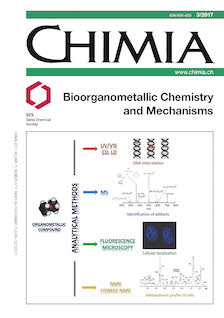Transition Metal-based Anticancer Drugs Targeting Nucleic Acids: A Tandem Mass Spectrometric Investigation
DOI:
https://doi.org/10.2533/chimia.2017.120Keywords:
Anticancer drugs, Cisplatin, Metallocenes, Nucleic acids, Tandem mass spectrometryAbstract
The search for effective drugs against cisplatin-resistant tumors resulted in a large number of organometallic compounds that are evaluated for their antiproliferative activity. Among the most promising candidates are bent metallocenes based on various transition metal ions and ligands. The elucidation of structural features and the characterization of the interaction of a drug candidate with its target require accurate and sensitive analytical tools. Tandem mass spectrometry is applied to the investigation of the adduct sites and binding patterns of metallodrugs bound to single-stranded oligonucleotides and higher-order nucleic acids. Results reveal the binding specificities of the different metallodrugs and demonstrate the influence they exert on the dissociation pathways of the adducts in the gas-phase.Downloads
Published
2017-03-29
Issue
Section
Scientific Articles
License
Copyright (c) 2017 Swiss Chemical Society

This work is licensed under a Creative Commons Attribution-NonCommercial 4.0 International License.
How to Cite
[1]
R. P. Eberle, Y. Hari, S. Schürch, Chimia 2017, 71, 120, DOI: 10.2533/chimia.2017.120.







